- Terms of Use

War News | Military History | Military News
Emotionally tough virtual tour: inside the auschwitz concentration camp.
- Guest Authors
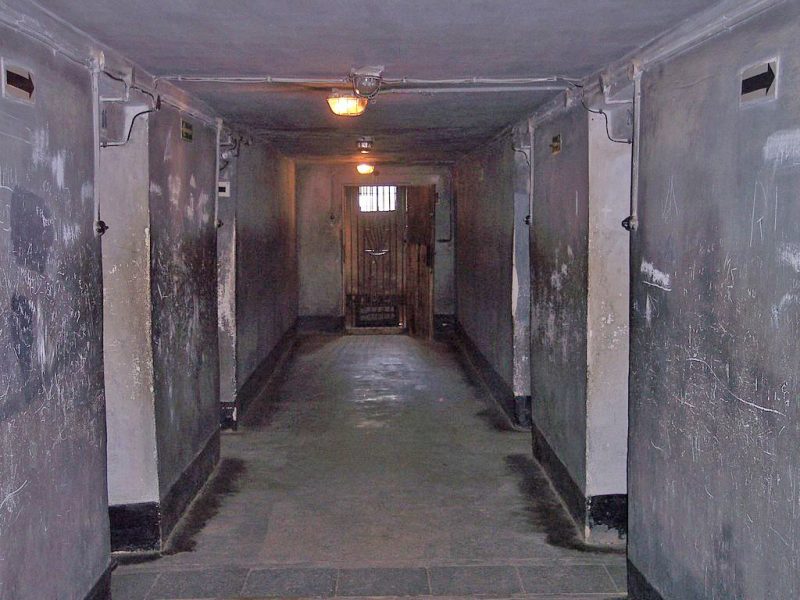
The Auschwitz concentration camp is an international symbol of human tragedy, terror, and genocide. It was originally intended to be another of the regular concentration camps that Nazi Germany had begun to create in the 1930s.
It finally became a part of “the Final Solution to the Jewish Question.” Today, the Auschwitz virtual tour commemorates all the victims, the lives lost, and those who suffered agonies as a result of the Nazis’ actions.
Auschwitz visit experience – Shocking Experiences during a visit to Auschwitz
Auschwitz is one of the four extermination camps that were built during the occupation of Poland. It was the biggest of the facilities in which the vicious genocide plan was implemented.
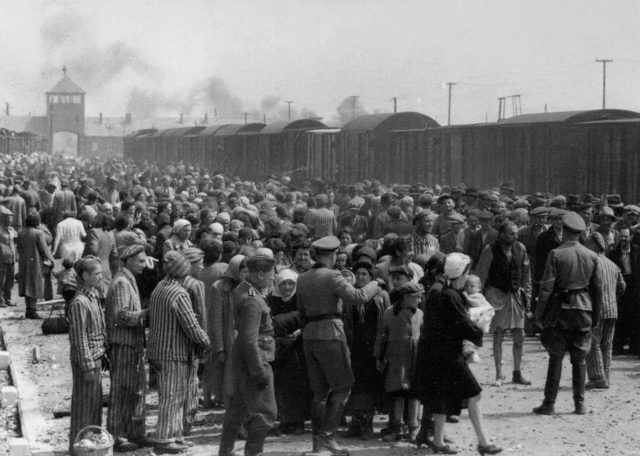
In 1940, the Nazi German authorities constructed a camp here that was initially intended to serve as a prison, for the confinement of political prisoners and oppositionists, mainly of Polish nationality.
It gradually evolved until it finally became a place of mass extermination. It witnessed the deaths of approximately 1.1 million Jews, 150,000 Poles, and 30,000 people of other nationalities.
KL Auschwitz is the only concentration camp to be added to the UNESCO list of World Heritage Sites. Since 1947 part of the complex has served as evidence for the crimes of Nazi Germany. Today it is one of the most visited places in Poland.
The Auschwitz Concentration Camp Tour forms a kind of obligation for people nowadays, as evidence of a human tragedy that took place not that many decades ago. Listen to the stories told by the experienced guides on behalf of all the victims.
Auschwitz Virtual Tour – the most important parts of the concentration camp
The Virtual tour of Auschwitz begins as you pass through the main gate, beneath the famous Arbeit macht frei sign, which translates as “Work brings freedom.” This is one of the most important symbols of such extermination and concentration camps. The mocking and cynical motto was aimed to encourage the inmates to undertake hard work that would supposedly free them.
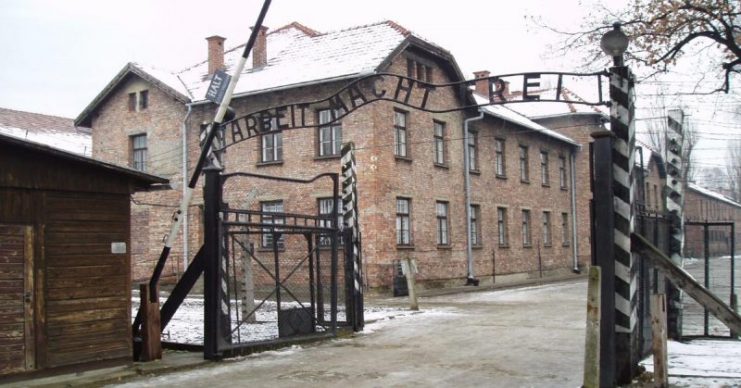
The sign was made by an artistic blacksmith named Jan Liwacz, who was an inmate at the time, and Kurt Muller, a member of the camp crew. According to one legend, the inmates who were putting the sign up deliberately turned the letter B upside down as a sign of resistance.
After the camp was liberated, the sign should have been transported to the East by Soviet soldiers. However, a former inmate, Eugeniusz Nosal, and a cart driver bribed the guard who was watching the train with a bottle of alcohol, and hid the sign in a building that belonged to the city authorities.
The sign was put back in position during construction of the Auschwitz-Birkenau State Museum.
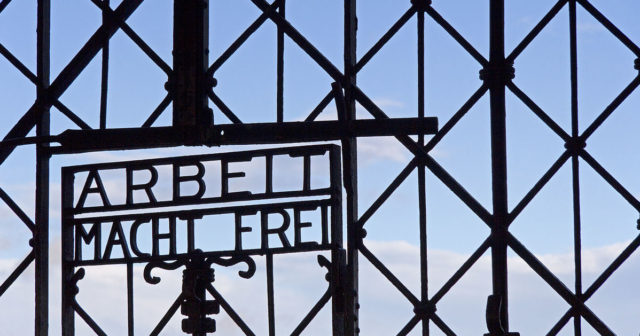
The camp blocks and buildings will engrave themselves in your memory. They were used for a number of purposes while the camp was in use. Currently, they serve as exhibition rooms, where copies of documents, photographs, sculptures, models and exhibits present the real picture of human tragedy and suffering.
Block 4 has graphic boards, documents, and photographs to illustrate the reasons for imprisonment, the inmates’ deportation, and extermination.
The visitors can also see exhibits of genuine relics, such as the empty cans that once held Zyklon B, a poison used in the gas chambers, and remains from the destroyed crematoria. The victims’ hair is an especially dramatic proof of the crimes.
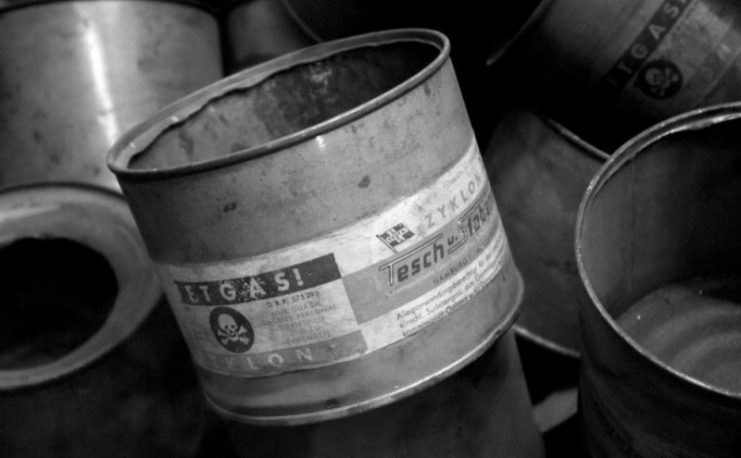
Block 5 features all items taken away from the murdered prisoners. Very often these items were all the inmates had, having packed them for their last journey. They include everyday objects, such as dishes, toothbrushes, glasses and children’s clothes ripped off them as they suffered their tragic fate.
Block 6 shows the sad and shocking reality of the inmates, starting from the moment they arrived at the camp. Here you can see the faces of the victims, deprived of their identity, dignity and life.
Block 11 served as the camp prison for those inmates who were suspected of conspiracy, who attempted to escape, sentenced to starvation or kept in a standing cell. From 1941, political prisoners were also kept here, and the basement was a place of mass execution using Zyklon B.
Here you can see the cells, court room and the place used by the SS men during their work shifts. Very close to Block 11, you will visit a courtyard where executions were carried out. This place witnessed the vicious murders of thousands of people of different nationalities.
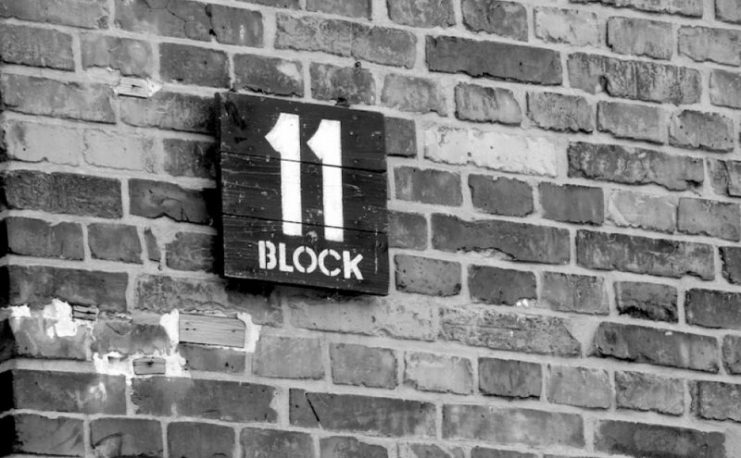
The Auschwitz visit experience becomes really difficult once you enter the area of the crematoria and the gas chamber. The buildings are mostly kept in their original condition. The crematorium was used until 1940 and was equipped with three ovens for burning corpses. The camp authorities stopped using Crematorium I in Auschwitz once the crematoria in Birkenau were opened.
The gas chambers and crematoria are extremely moving for all visitors during the Auschwitz concentration camp tour. Visitors can see the nail marks left by innocent people, desperately attempting to escape death, and left as irrefutable proof of the victims’ will to survive, so brutally taken away.
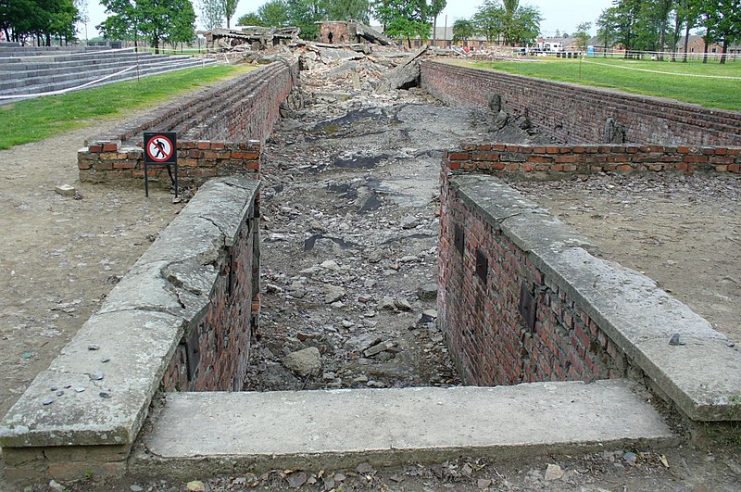
Read another story from us: Forbidden Love: Auschwitz Prisoner and SS Guard Developed Relationship
Visit to Auschwitz – an obligation for every modern human being
A visit to Auschwitz is an unforgettable experience. Concentration camp tours allow you to touch a real proof of the crimes carried out by Nazis on other humans. It is a place where men, women and children were tortured and mass exterminations took place. Executions were carried out by shooting or in the gas chambers, and horrific experiments were performed on the inmates.
It tells a story of the ordinary people who died in the name of a shameful ideology. Together the real and the virtual tours of Auschwitz build an awareness of old crimes and very clearly explain why they should never happen again.
Karolina Ślęczkowska from Discover Cracow
- LET'S TALK
- LIFE & CULTURE
- LET'S EAT
- FAMILY & EDUCATION
- SOCIAL & PERSONAL
- JEWISH WORDS
- JEWISH HOW TOS
- RABBI I HAVE A PROBLEM
- EDUCATIONAL
- PROFESSIONAL
- THE FRESSER
- THE SCHMOOZE
Sign up to The JC newsletter
Auschwitz goes virtual with new educational vr tour.
As well as allowing people to look around rooms freely, the film features survivor testimony, pictures, and drone footage

BY Daniel Ben-David
- Holocaust education
- Israel Education
- Second World War

The first ever virtual reality tour of Auschwitz concentration camp will have its UK premiere next week, at an event attended by members of the House of Lords and other community and organisational leaders.
The film, “Triumph of the Spirit 360” is experienced wearing a virtual reality (VR) headset, enabling participants to embark on a 50-minute, 360° guided tour of the infamous Nazi death camp.
As well as allowing people to look around rooms freely, the film features survivor testimony, pictures, and drone footage, with narration by world-renown speaker and Holocaust researcher Rabbi Israel Goldwasser.

VR Auschwitz
A group of Israelis watch “Triumph of the Spirit 360” (courtesy)
The film had originally been created for those physically unable to make the journey or for young people growing up in an Orthodox community who, unlike their secular counterparts, do not have trips to Auschwitz built into their school curriculum as part of Holocaust education.
An Israeli ultra-Orthodox mother, Miriam Cohen, 30, had the idea for the project three years ago.
She told the JC: “I grew up in a village and when I was 17 all the kids went to Poland, but I couldn’t go because I was in an ultra-Orthodox school. When they came back with this profound emotional experience, I felt like I had missed out on something very special, and that’s when I decided I was going to make it there.”
Since the summer of 2022, the film is increasingly being shown to secular high school students who now also will not make the trip to Auschwitz due to an ongoing political spat between Israel and Poland.
The film, which has been viewed by over 70,000 people in Israel to critical acclaim, is open to all who wish to experience it.
Mrs Cohen said: “After showing it to students, it started to spread all over Israel. We’ve had requests from the military, we’ve shown it to the police, high-tech events, to schools, to the old, the young, Orthodox and non.

IDF soldiers watching the film (courtesy)
“The goal is to bring this experience, which can be so powerful and profound, to all those who cannot go and to as many people as possible,”

Auschwitz VR
A virtual reality camera capturing one of the rooms in Auschwitz concentration camp (courtesy)
As well as the harrowing testimonies, pictures, music, and never-before-seen drone footage, the experience is made all the more powerful because, according to Mrs Cohen, you experience the camps alone with only the guide.
She said: “When you go with friends, especially young people, you don’t always have the opportunity to capture and process everything. You’re taking selfies, distracted by friends, or worried about being judged. This experience allows you to be alone with the reality of the camp and to really understand it, and that way be moved by it.
“One of our goals is to connect young people to their Jewish identity. Another is to connect people to this deep place in their heart, not to take strength but to give it, and hope and power,”

A group of Israelis watch Triumph of the Spirit 360 (courtesy)
Three Israeli ultra-Orthodox mothers are heading the project. Mrs Cohen, a former actress, is the director and producer of the film. Chani Kopolowitz is the project manager in Israel and Yuti Neiman is the technology expert and editor.
Mrs Cohen said: “In the beginning, there were several challenges. Although everyone we approached in Israel really liked the idea, they said that VR wouldn’t work because it was typically for short experiences. Then they told us that we couldn’t go to Poland during Covid.
“But eventually, we made contact with the director of Auschwitz who was very touched by the project and granted us special permission to film inside the camp.”

A virtual reality camera stands next to a barbed wire fence on the grounds of Auschwitz concentration camp (courtesy)
The film’s footage was captured over three days while Auschwitz was closed off to visitors during the Covid19 pandemic.
“It was surreal to be alone in the camp. It’s not something that can be described in words, it must be experienced for oneself.
“Triumph of the Spirit 360 provides a powerfully emotive experience not least because you’re listening to survivors’ stories overlayed in the very same rooms they occurred in.
“In a world with fewer and fewer survivors, I wanted to put the Holocaust back in front,” Mrs Cohen said. “As a kid I used to see survivors on the bus with their numbers tattooed to their forearm, but we don’t see them anymore.
“I saw survivors, but my children won’t. There are six million reasons pushing me into this project.”

Two girls hold hands as they watch Triumph of the Spirit 360 (courtesy)
The UK premiere of “Triumph of the Spirit 360” will take place on Tuesday, January 31 with 100 guests, each with their own headset. Several high-profile figures are expected to attend, including Lord Eric Pickles, Lord Howard Leigh, Lord David Wolfson, and various heads of Jewish communal and Holocaust organisations.

French police storm Sciences Po building occupied by anti-Israel student protesters

Study reveals antisemitic attitudes of student Islamic religious teachers

Revealed: Lawyer pushing for Netanyahu arrest warrant said October 7 was legally justified

Iranian university offers scholarships to expelled student protesters in US and Europe

Colombia cuts diplomatic ties with Israel
Have the JC delivered to your door

Want more from the JC?
To continue reading, we just need a few details....
©2024 The Jewish Chronicle
- Advertising
- Terms & Conditions
- Cookie Policy
- Privacy policy
We Showcase the best city in the nation with your donation.

Chicago Reader
Chicago’s alternative nonprofit newsroom
A survivor’s tour of Auschwitz
Share this:.
- Click to share on Twitter (Opens in new window)
- Click to share on Facebook (Opens in new window)

She didn’t want to talk about it.
Fritzie Fritzshall survived Auschwitz, came to Chicago, and built what most of us are lucky enough to think of as a normal life, with work and marriage, a child and a home.
She did it by putting her Auschwitz experience in a mental box and shutting it away. Not denying it, but denying it continued presence in her life. She didn’t want it to define her.
Until she did.
Fritzshall was born in Czechoslovakia in 1931, and was 13 years old when Nazi occupiers forced her and her family first to a ghetto and then to Auschwitz-Birkenau, where her mother and two brothers were murdered. She became the youngest worker in a slave labor factory, survived a death march in 1945, came to America the following year, and tried not to talk about any of that for nearly four decades.
In the early 1980s, when the Holocaust Memorial Foundation was beginning to collect videotaped testimony from survivors, Fritzshall’s son, Steve, who had learned not to ask her about it, urged her to participate. Make a tape and bring a copy home for me, he said. When she did, the floodgates opened. The starving women who worked in that slave labor factory had shared their tiny allotment of bread with her so that she, as the youngest, might survive. In the video made that day, she said she’d neglected her duty to tell their story.
And from then on, she did. In the hope that teaching about the Holocaust might keep anything like it from happening again, she never stopped talking about it.
Fritzshall died June 19, 2021, but that isn’t stopping her either.
“The Journey Back” Free with museum admission, but accommodates just eight viewers at a time; advance ticket reservations, available at ilholocaustmuseum.org , are required for it and for the hologram.
At the time of her death, she’d been president of the Illinois Holocaust Museum and Education Center for more than a decade, and you can still see and hear her telling her story there. She’s one of the rotating witnesses in the museum’s interactive “Survivor Stories” hologram exhibit (where viewers really do talk with the dead). She’s also featured in the museum’s newest high-tech offering, “The Journey Back”—a virtual reality trip to Auschwitz that opens to the public January 27.
The new VR experience consists of two 15-minute films. A Promise Kept follows Fritzshall from the idyllic Czechoslovak/Hungarian countryside of her childhood to the Auschwitz compound in Poland. Don’t Forget Me traces the parallel story of George Brent, also barely a teenager when he was taken from his Czechoslovakian home to Auschwitz where his mother and brother were killed, and then to two brutal labor and starvation camps in Austria—Mauthausen and Ebensee.
A chance to preview the two films brought me to the museum last week, and reminded me that, after numerous visits, I still haven’t mastered its two-building layout. That’s no accident: the permanent exhibit, which moves chronologically through the Holocaust, from pre-WWII life in Europe through the war years to liberation, is a deliberately disorienting maze that propels the viewer on a one-way trip from darkness to light. As its architect Stanley Tigerman explains in a video available on the museum website, it’s a building in which every detail—from the columns outside to the number of windows in the Hall of Reflection and the shape of the theater space—has meaning.
Kelley Szany, the museum’s vice president of education and exhibitions, traveled to Europe with Fritzshall for the VR filming. She says the concept emerged after Fritzshall’s hologram had been made, from the realization that, like the survivors, these sites might not be permanently available.
“This is the first time survivors’ stories are merged with the sites of these atrocities in virtual reality,” Szany told me; the idea is to “archive and preserve” them, in order to help educate about what can happen “when people remain indifferent and allow hatred to grow.”
Auschwitz (like other Nazi concentration and death camps) has largely been swept clean; what you see of it in this film, beyond the infamous gate and railroad tracks, is mostly bare ground, fencing, and antiseptically empty buildings. In part because of that, the VR technology, with its 360-degree views and clunky goggles (remember 3D?), is arguably less efficacious for this museum’s storytelling than the amazingly effective interactive holograms. But that’s a high bar.
And when Fritzshall arrives at Auschwitz, we see that the place comes alive for her—the sights, sounds, deathly chill, filth, and stench of it rushing back. She recalls, in the film, that the mass latrine, a single room filled with long open benches studded with one hole after another, was both an example of Nazi strategies to degrade and dehumanize the prisoners, and, ironically, a place of value to them. Because it was the only place where the guards did not follow them in, she says, it became a kind of hellish haven—the one spot in the camp where they were able to connect, embrace, communicate freely (even praying together), and affirm their humanity.
More in COLUMNS & OPINION
Thoughtful takes from the readers and the writers.

A new genocide exhibit opens at the Holocaust Museum

Editor’s note: why we cover so much art

Editor’s note: public safety

Exonerated, graduated, and ready for law school

Claudine Gay, AI, and weaponizing plagiarism

- Mideast News
- Art&Culture
- ynetespanol
- Privacy Policy
- Terms of Use
Auschwitz-Birkenau Museum introduces virtual tour
Israeli companies behind the project and holocaust survivors say the new virtual tour provides a modern solution to see the camp in a way that's accessible and convenient for everyone.

- Real-life Casablanca: Moroccan-Israeli saved thousands of Jews during Holocaust
- The power of a written word: Holocaust survivors convey messages for future generations
- Berlin: A thriving modern capital confronting its dark past
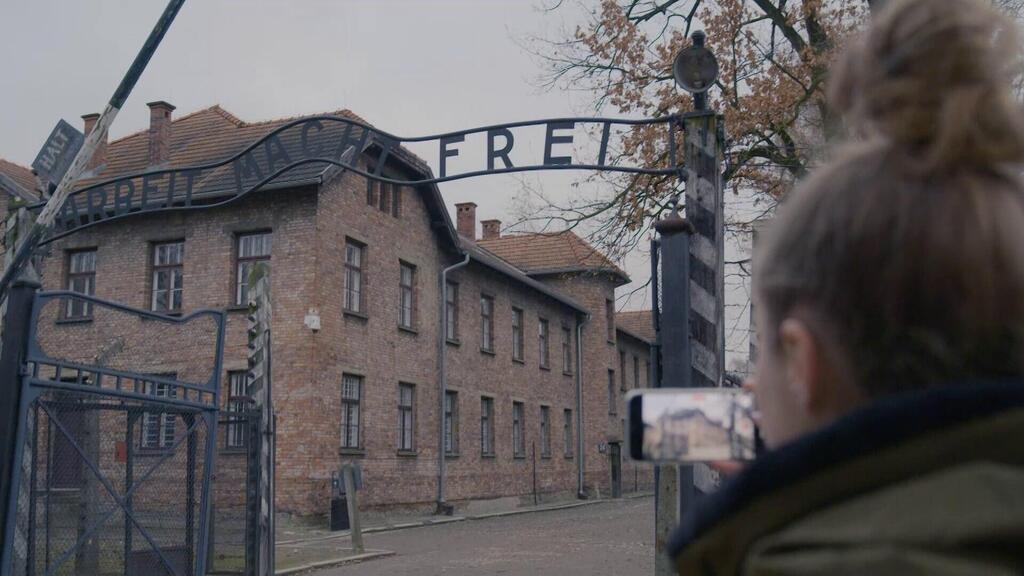
The future of Holocaust education
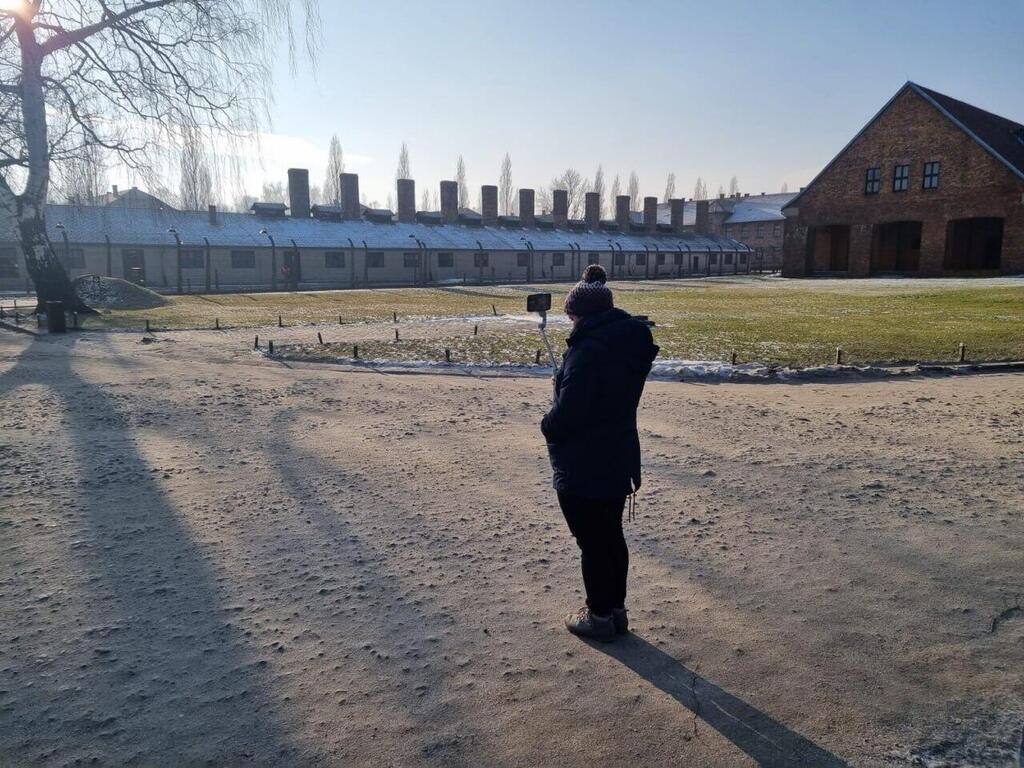
"The idea was to make the place accessible so that it would not be closed off to the world. The tour provides a personal experience, and viewers can ask the guide questions, for example."
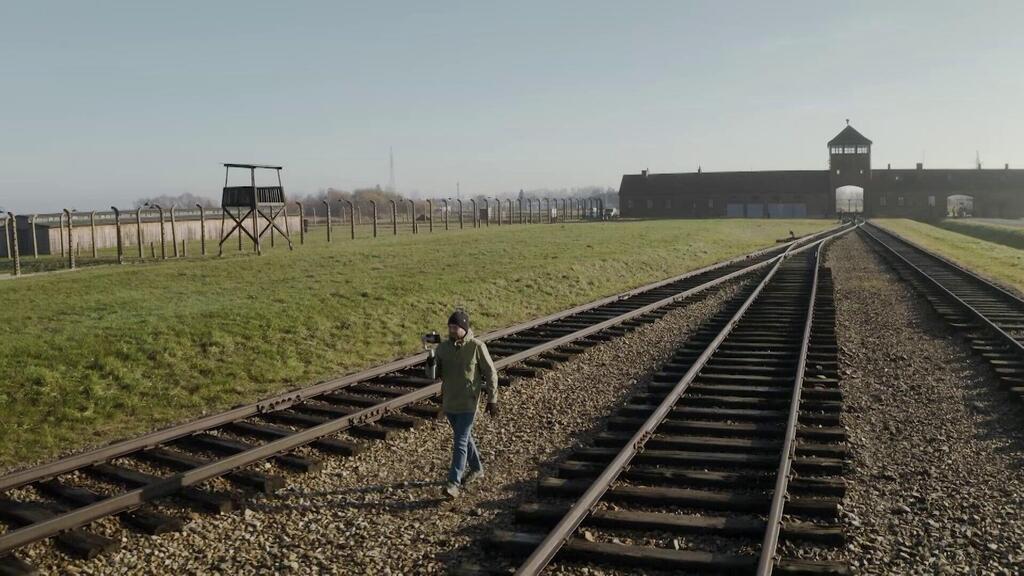
A new guide for a new tour
"It's a huge thing to bring Auschwitz to Africa or to countries in the Middle East, after the Abraham Accords. Auschwitz becomes accessible to new audiences."
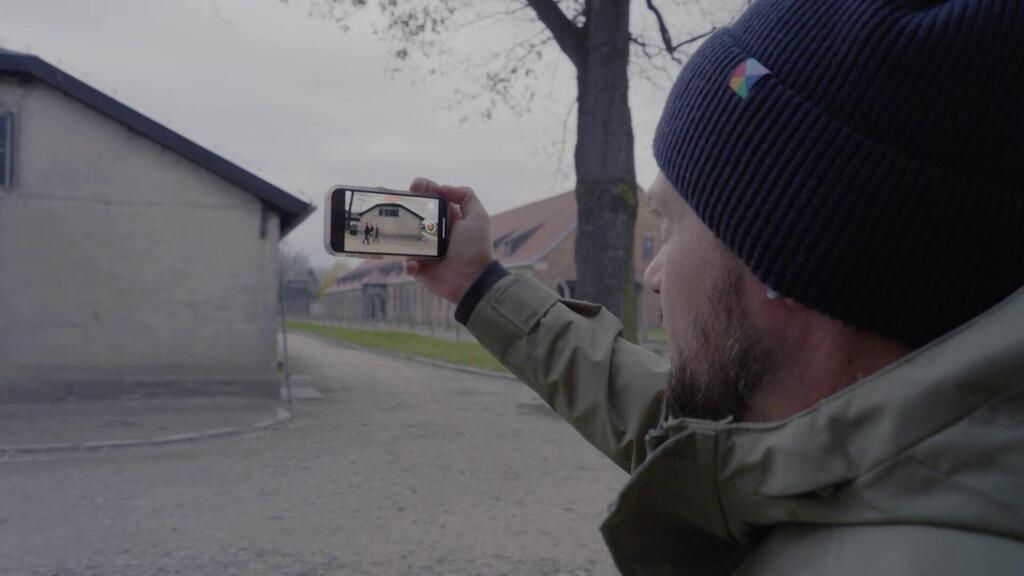
Digital tour will lead to more physical tours
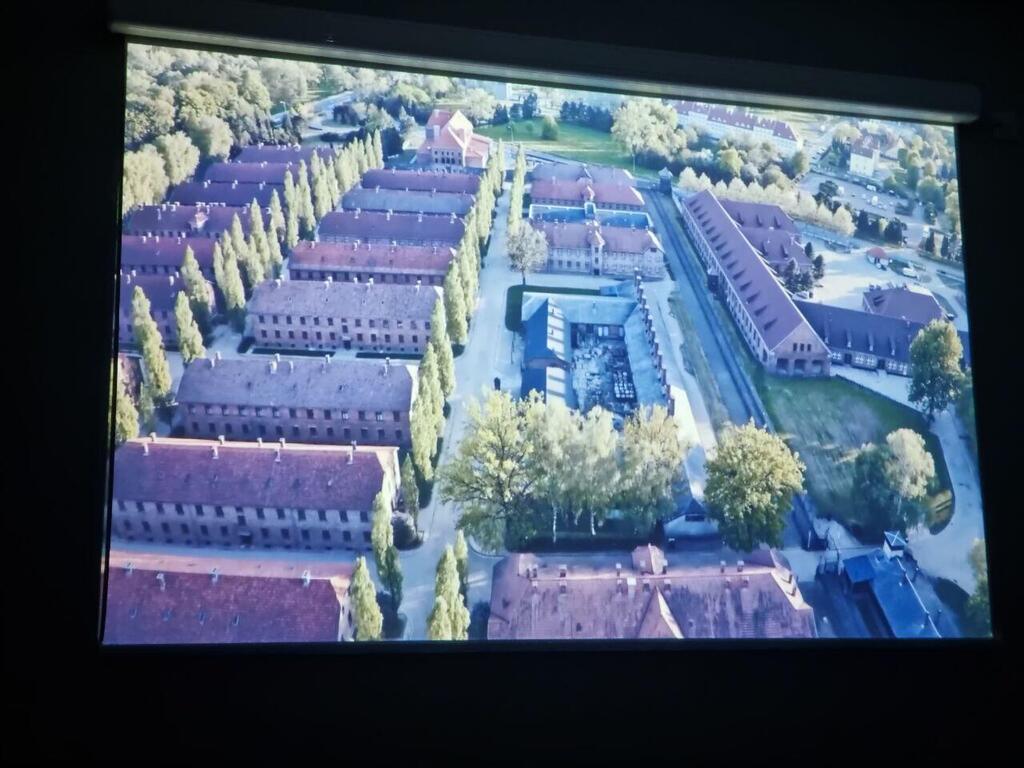
"We live in a digital world with Holocaust denial, hatred, racism, and antisemitism on the rise—and the internet plays a significant role in that.”
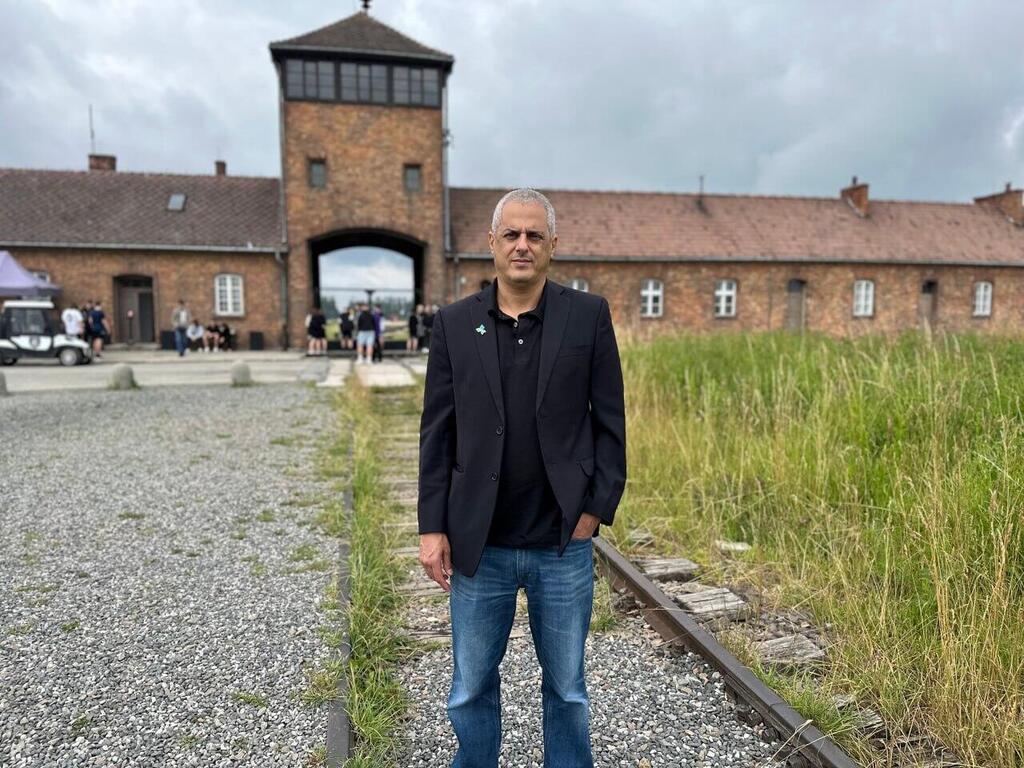
- High contrast
- Reverse contrast (yellow over black)
- Accessibility statement
- Educational Materials in other Languages
- Login / Sign-in Remember me Sign in
- Accessibility

- Reserve your Visit
- About the Holocaust
- The Holocaust Resource Center
- This Month in Holocaust History
- Video Lectures
- Video Testimony Resource Center
- The Middle East Conflict, Antisemitism and the Holocaust
- Shoah Names Database
- The Photo Archive
- Righteous Database
- The Documents Archive
- Survivor Testimonies
- Deportations Database
- The Artifacts Collection
- The Library
- Online Film Catalog
- About the Archives
- Reference and Information Services
- Hall of Names
- Gathering the Fragments
- About the Institute
- Publications
- Yad Vashem Studies
- Events of the Intl Institute
- Postdoc Fellowships
- Educational Materials
- Educational Videos
- For Educators in Jewish Frameworks
- Online Courses
- e-Newsletter
- International Projects
- International Conferences
- Echoes & Reflections
- The Holocaust History Museum
- The Art Museum
- Exhibitions Pavilion
- ready2print Exhibitions
- Online Exhibitions
- "Shoah"- Auschwitz-Birkenau
- Holocaust Remembrance Day 2024
- Holocaust Remembrance Day Through the Years
- Online Torchlighter Film Archive
- Int. Holocaust Remembrance Day
- Download Pages of Testimony
- Survivor Forms
- Bar/Bat Mitzvah Twinning Program
- The Shoah Victims' Names Recovery Project
- About the Righteous
- About the Program
- "I Am My Brother's Keeper". A Tribute to the Righteous
- Featured Stories
- Names of Righteous by Country
- We Seek Your Help
- How to Apply
- Opening Hours
- Reserve Your Visit Online
- Transportation and Parking
- Plan Your Visit
Sunday to Thursday: 09:00-17:00
Fridays and Holiday eves: 09:00-14:00
Yad Vashem is closed on Saturdays and all Jewish Holidays.
Entrance to the Holocaust History Museum is not permitted for children under the age of 10. Babies in strollers or carriers will not be permitted to enter.

- The Holocaust
- Digital Collections
- Exhibitions
- Remembrance
- Education & E-Learning
- Learning environments
- 360° virtual tour for learning about, and teaching, the Holocaust
360° virtual tour for learning about, and teaching, the Holocaust
Before you is a 360-degree virtual space for learning about, and teaching, the Holocaust.
This space takes the learners on a chronological journey that tells the story of the Holocaust: the lives of Jews before the Holocaust, thriving communities and culture, the persecution of the Jews, anti-Jewish legislation and edicts, establishment of the camps, deportations, mass murder, uprisings, rescue stories, liberation and the return to life. All these are told and taught through a variety of vantage points and learning styles - historical videos, animated concepts, survivor testimony, historical figures and more.
The space consists of six rooms that outline the story of the Holocaust, covering the following themes: Nazi ideology and the Jews of Germany; The Occupation of Poland and Life in the Ghetto; The Beginning of Systematic Murder and Its Spread to Poland; The Europe-wide Murder of the Jews; Historical Figures of the Holocaust; Liberation and a New Life. In each room you can find suggestions for classroom discussion, classroom activities or homework - all based on the videos and testimonies presented.
The learning is designed to be modular and fundamentally experiential. The learners can go through the rooms and study them in order, or enter a specific room (from the map or location menu) and focus on that particular topic, viewing the videos within it. In addition teachers, and educators in informal education frameworks can choose videos and questions from various rooms, constructing a personal route, and then instruct the student to carry out the appropriate research.

Subscription for e-Newsletter
Thank you for registering to receive information from Yad Vashem.
You will receive periodic updates regarding recent events, publications and new initiatives.
- Plan Your Visit to Yad Vashem
- Explore Our About the Holocaust Resources
- View Our Online Exhibitions
- Access our Resources for Educators
- Yad Vashem Blog
- Shop Our Online Store
- Support Yad Vashem
- Holocaust Remembrance Days
- ready2print exhibitions
- The Museum of Holocaust Art
- Artifacts Collection
- Shoah Victims Name Recovery Project
- Search Our Digital Collections
- Shoah Victims' Names Database
- The Righteous Database
- Terms and Conditions
- Privacy Policy

"The work of Yad Vashem is critical and necessary to remind the world of the consequences of hate"
#GivingTuesday Donate to Educate Against Hate
Interested in receiving information and updates from Yad Vashem?

Worldwide antisemitism is on the rise.
At Yad Vashem, we strive to make the world a better place by combating antisemitism through teacher training, international lectures and workshops and online courses.
We need you to partner with us in this vital mission to #EducateAgainstHate
New Yad Vashem website redirection
The good news:
The Yad Vashem website had recently undergone a major upgrade!
The less good news:
The page you are looking for has apparently been moved.
We are therefore redirecting you to what we hope will be a useful landing page.
For any questions/clarifications/problems, please contact: [email protected]
Press the X button to continue
The Holocaust on the Web
Virtual tours.
Websites that include virtual tours allow you to empathize with the victims, of the Holocaust by allowing you to see where the victims were and what they saw. Virtual tours also allow you to see/ learn about the layout of locations including concentration camps without actually having to travel to those places.
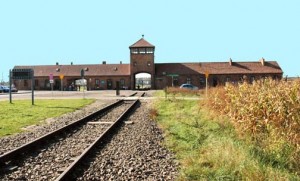
Auschwitz Scrapbook
This website includes a virtual tour of the concentration camps: Auschwitz, Monowitz, and Oswiecim. Once you pick which location you want to view, you then can click on links to see the entrances, gates, gas chambers, etc. of each location through a series of hyperlinks. You have the choice of where you want to see/ “be” in the camp.
This website preserves the memory of the Holocaust by preserving the memory of three concentration camps built and used during the Holocaust. The virtual tours let users click on a series of hyperlinks in order to see the layout of the concentration camps and feel like you are walking through the concentration camps, while in your own home. You can choose which aspect of the Holocaust you want to learn about and see the layout of without actually having to travel to Europe.
A Teachers Guide to the Holocaust
This website presents a series of virtual tours of the Auschwitz concentration camp, including a tour of the Main Entrance, Gas Chamber, “Wall of Death,” and many more. When choosing a tour, AUS2S (1) such as this one of an Auschwitz gas chamber, AUS3S (1) or this one of the “Wall of Death” in Auschwitz. You have the choice to scroll where on that tour you want to “move” to and what you want to see/ learn about.
This website helps preserve the memory of the Holocaust by memorializing one of the largest and most famous concentration camps. The virtual tours allow people to see what Auschwitz looks like long after all of the buildings and fences are old and worn. Although the location can be cared for, how long will people try to keep the area kept? Photographs, videos, and virtual tours allow for the area to always look as it did during the Holocaust. This website allows you to learn about the different aspects of Auschwitz by seeing the layout of the camp, without actually having to visit the camp.
Virtual Auschwitz Map
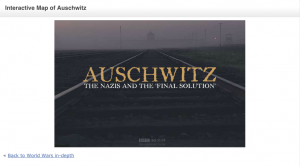

Remembering Auschwitz
While many virtual tours of concentration camps, especially Auschwitz, exist; this site provides one of the most interactive. The tour actually allows the visitor to choose a site in the camp and navigate around a certain distance from that area. The experience is much like standing in a single spot on the camp and turning in circles to get a full view of the surrounding. A user may also choose to “walk” a short distance from the spot on which they entered the tour to get a slightly different perspective on the surroundings. This set up is the perfect example of the empathetic interaction the site is trying to elicit from the visitor. The site is getting you to feel like you’re actually standing in the camp where the victims were or what it would be like to stand there today and try to process all you’re seeing.
Student analysis of websites about the Holocaust

The Holocaust: History and Memory
Virtual tour.
Suitable for classroom use or by families and individuals, this virtual tour, hosted on Google Arts & Culture , allows visitors to explore nine interactive galleries at the US Holocaust Memorial Museum. The experience offers a chronological narrative of the Holocaust through encounters with historical artifacts and photographs. Visitors will also see one of the Museum’s conservation labs, allowing them to examine how staff preserve and present Holocaust history.
Preview scenes from the virtual tour
360 view of the Hall of Witness
360 view of a railcar used for deportations to killing centers
Historical photo: the Lodz ghetto
Artifact: Desecrated Torah scrolls
Artifact: a young boy's stuffed bear in one of the Museum's conservation labs
Lesson Plan
Lesson length: One to two class periods
In this lesson , students examine how the Museum uses artifacts and photographs from its collections to present the history of the Holocaust and memorialize its victims—including artifacts and photographs that illustrate important aspects of Holocaust history such as Torah scrolls rescued during Kristallnacht, a train car, prisoner barracks from Auschwitz, and a gas chamber model. Students also tour the Museum's architecture and discuss what makes the Museum a living memorial. Through their exploration of the Museum's exhibitions, students gain a greater understanding of key events and topics related to the Holocaust and are able to explain the systematic nature, scope, and consequences of the Holocaust.
Lesson Plan (PDF)
Worksheet (PDF)
This virtual field trip and lesson were adapted from an activity created in conjunction with Houghton Mifflin Harcourt Publishing Company.
A previous version of this virtual field trip hosted on Google Expeditions is no longer supported.
This Section
Explore lesson plans and training materials organized by theme to use in your classroom.
- Online Tools for Learning and Teaching
- Videos for Classroom Use
- Auschwitz Photos
- Birkenau Photos
- Mauthausen Photos
- Then and Now
- Paintings by Jan Komski – Survivor
- Geoffrey Laurence Paintings
- Paintings by Tamara Deuel – Survivor
- David Aronson Images
- Haunting Memory
- Holocaust Picture Book – The Story of Granny Girl as a Child
- Birkenau and Mauthausen Photos
- Student Art
- Photos – Late 1930s
- Holocaust Photos
- Lest We Forget
- Carapati – a Film
- Warsaw Ghetto Photos
- Nordhausen Liberation
- Dachau Liberation
- Ohrdruf Liberation
- Gunskirchen Lager Pamphlet
- Buchenwald Liberation
- Chuck Ferree
- Lt. Col. Felix Sparks
- Debate the Holocaust?
- Books by Survivors
- Children of Survivors
- Adolf Eichmann – PBS
- Adolf Hitler’s Plan
- Himmler Speech
- Goebbels Diaries
- Letter on Sterilization
- Letters on Euthanasia
- Nazi Letters on Executions
- Page of Glory
- Homosexuals
- Gypsies in Auschwitz I
- Gypsies in Auschwitz 2
- Babi Yar Poem
- Polish Citizens and Jews
- Harold Gordon
- Sidney Iwens
- I Cannot Forget
- Keep Yelling! A Survivor’s Testimony
- A Survivor’s Prayer
- In August of 1942
- Jacque Lipetz
- Walter Frank
- Helen Lazar
- Lucille Eichengreen
- Judith Jagermann
- Filip Muller
- Holocaust Study Guide
- Holocaust Books A-Z
- Anne Frank Biography | 1998 Holocaust Book
- Help Finding People Lost in the Holocaust Search and Unite

- Holocaust history and stories from Holocaust Photos, Survivors, Liberators, Books and Art
- Remember.org Origins
A Virtual Tour of Auschwitz: On Every Day Since…
Illustrated Tour of Auschwitz
A Virtual Tour of Auschwitz
On every day since… a christian at auschwitz, welcome to my journal.
“The same day I saw my first horror camp, I visited every nook and cranny. I felt it my duty to be in a position from then on to testify about these things in case there ever grew up at home the belief or assumption that the stories of Nazi brutality were just propaganda.”
– General Dwight D. Eisenhower
On every day since I first saw Auschwitz, I have wept.
– The Author
Introduction
What follows here is the written and photographic record of five days spent visiting two Nazi concentration camps in and near Oswiecim, Poland in September 1993. Known as Auschwitz and Birkenau, the two camps were liberated in January 1945. The remains of the camps, the survivors’ and liberators’ testimonies, and the documentary evidence leave no doubt as to the enormity of the crimes against humanity which were committed there. This journal, which started out as a letter to my friend of 30 years, John Anderson Parker, is a work in progress and an expression of the belief that we must never forget .
Parts of this document will change. Most changes will occur in Afterwords as matters of fact are corrected and puzzles are solved. New or revised graphics will appear in various sections from time to time. If the project goes as hoped and a return trip is made possible, the quality and scope of the work will be improved.
Comments and reactions are welcome by [email protected] via e-mail.
© 1993, Stuart C. Nichols
Illustrated Tour of Auschwitz , where you can just view the pictures Stuart took.
Go to the Top of the Page

Remember. Zachor. Sich erinnern.
Remember.org helps people find the best digital resources, connecting them through a collaborative learning structure since 1994. If you'd like to share your story on Remember.org, all we ask is that you give permission to students and teachers to use the materials in a non-commercial setting. Founded April 25, 1995 as a "Cybrary of the Holocaust". Content created by Community. THANKS FOR THE SUPPORT . History Channel ABC PBS CNET One World Live New York Times Apple Adobe Copyright 1995-2024 Remember.org. All Rights Reserved. Publisher: Dunn Simply
APA Citation
Dunn, M. D. (Ed.). (95, April 25). Remember.org - The Holocaust History - A People's and Survivors' History. Retrieved February 28, 2022, from remember.org
MLA Citation

The Holocaust: History and Memory
Explore the united states holocaust memorial museum, a living memorial that encourages visitors to remember, reflect, and act to confront hate and promote human dignity. in this virtual tour you will examine how the museum preserves and presents holocaust history.
By United States Holocaust Memorial Museum
Hall of Witness
Welcome to the United States Holocaust Memorial Museum—America’s national institution for the documentation, study, and interpretation of Holocaust history and the country’s memorial to the millions of people murdered during the Holocaust. [Click and drag to explore.]
You are standing in the center of the museum in the Hall of Witness, a three-story, sky-lit gathering place—a place meant to separate visitors from the outside world and prepare them to experience the museum. [Click and drag to explore.]
Skylight and Glass Bridges United States Holocaust Memorial Museum
Skylight and Glass Bridges
In this hall, there isn’t a clear view of the sky—metal beams create a cage-like barrier. The skylight isn’t atop the building—it presses down upon visitors. Above, ghostlike figures cross over glass bridges, lending an unsettling air of being watched.
“You Are My Witnesses” United States Holocaust Memorial Museum
“You Are My Witnesses”
On the West wall of the Hall of Witness are words taken from the Bible’s book of Isaiah. This quote suggests a profound and meaningful role for the visitor—to bear witness is not only to pay attention but to truthfully testify to others about what one saw.
Arches, Red Brick and Distorted Perspective United States Holocaust Memorial Museum
Arches, Red Brick and Distorted Perspective
Red brick archways are plentiful in the Hall of Witness, and skewed lines distort visual perspectives. Camp architecture, like the entrance to Auschwitz-Birkenau shown here, served as inspiration.
The Jews of Ejszyszki and the Holocaust
In 1933, Jews lived in every country of Europe. The largest Jewish populations were in eastern Europe where many lived in predominantly Jewish towns or villages, called shtetls. These photos, taken before the Holocaust, show people from the shtetl of Ejszyszki (Eh-Shish-Kee). [Click and drag to explore.]
Approximately nine million Jews lived in countries occupied by or allied with Nazi Germany during World War II. By the war’s end, two out of every three European Jews were dead, including almost all of Ejszyszki’s Jews. [Click and drag to explore.]
Reconstructing the Past, Memorializing the Victims United States Holocaust Memorial Museum
Reconstructing the Past, Memorializing the Victims
Moshe Sonenson holds his daughter Yaffa. They were among only a handful of survivors from Ejszyszki. As an adult, Yaffa gathered the approximately 1,000 photographs you see here from more than 100 families torn apart by the Holocaust.
Young Girls in Ejszyszki United States Holocaust Memorial Museum
Young Girls in Ejszyszki
Jews had lived in Ejszyszki for almost 900 years before they were murdered by the Germans and collaborators in 1941. Photographs in this exhibit document the rich religious, cultural, economic, and familial life of a Jewish community that once existed.
Mickey Mouse Proposes United States Holocaust Memorial Museum
Mickey Mouse Proposes
Esther Lapp (pictured here) and her family were among approximately 4,000 Jewish men, women, and children from Ejszyszki and nearby towns who were rounded up by Germans and their collaborators and shot in a mass grave.
“All Walks of Life” United States Holocaust Memorial Museum
“All Walks of Life”
Jews could be found in all walks of life: from farmers and factory workers to teachers and doctors. Nazi Germany’s military conquests made almost all European Jews potential victims of the Holocaust.
Kristallnacht: The Night of Broken Glass
After years of antisemitic harassment and discrimination, on November 9–10, 1938, the Nazi-German state organized a nationwide outbreak of violence against the Jewish community in Germany. Nazis called it Kristallnacht (“Crystal Night”). [Click and drag to explore.]
During Kristallnacht, Nazi gangs destroyed hundreds of synagogues and more than 7,000 Jewish-owned businesses. Almost 30,000 Jews were arrested without charge and held in concentration camps and prisons. They were released only if they agreed to leave Germany. [Click and drag to explore.]
Desecrated Torah Scrolls United States Holocaust Memorial Museum
Desecrated Torah Scrolls
These Torah scrolls, from synagogues in Vienna and Marburg, were desecrated during Kristallnacht. The Torah (books of Moses) is the foundation of Jewish religious faith. The scrolls here were retrieved by German individuals and safeguarded until after the war.
Neighbors Watch a Synagogue Burn United States Holocaust Memorial Museum
Neighbors Watch a Synagogue Burn
Nazis and their collaborators destroyed hundreds of synagogues (Jewish temples) throughout Germany and Austria, often in full view of the public and of local firefighters, who had received orders to intervene only to prevent flames from spreading to nearby buildings.
Destruction of Jewish-Owned Businesses United States Holocaust Memorial Museum
Destruction of Jewish-Owned Businesses
Nazi stormtroopers smashed the windows of Jewish-owned shops and destroyed or looted goods. The government forced Jews to repair damages at their own cost, pay massive fines (totaling almost $7 billion in 2018 ), and close or sell their businesses.
Newly Arrived Prisoners at Buchenwald United States Holocaust Memorial Museum
Newly Arrived Prisoners at Buchenwald
Following Kristallnacht, Nazi SS (elite guards) and German police arrested almost 30,000 Jews, transferring most of them to concentration camps where hundreds died from brutal treatment. Most were released on condition that they leave Germany.
Ghettos: Concentration and Isolation
After invading Poland and later the Soviet Union, Germany tried to isolate and control Jews by forcing them to live in marked-off, segregated sections of towns and cities they called ghettos. [Click and drag to explore.]
The Germans created at least 1,000 ghettos; extreme overcrowding was common, and contagious diseases spread rapidly. People were always hungry. Tens of thousands died in ghettos from illness, starvation, and cold. Between 1942 and 1944, the Germans emptied the ghettos, deporting the Jews to camps and killing centers. [Click and drag to explore.]
In the Warsaw Ghetto United States Holocaust Memorial Museum
In the Warsaw Ghetto
The largest ghetto was in Warsaw, where—after confiscating their property—the Germans confined more than 400,000 Jews. They were required to wear white armbands with blue Stars of David and were conscripted as forced laborers by Germans and their collaborators.
Segregation and Confinement in the Lodz Ghetto United States Holocaust Memorial Museum
Segregation and Confinement in the Lodz Ghetto
Many ghettos were enclosed by fences or walls, with entrances guarded by SS (Nazi elite guards) and police. In Lodz, a trolley for non-Jews ran through the ghetto, fenced off under police guard. Jews were forced to walk over it on a footbridge.
An Act of Resistance United States Holocaust Memorial Museum
Documenting History: An Act of Resistance
As Germans and their collaborators deported Jews from the Warsaw ghetto to their deaths, Jews hid a secret archive about life in the ghetto: artwork, photographs, letters, diaries, and official edicts in containers like this milk can.
A Desperate Plea United States Holocaust Memorial Museum
A Desperate Plea
One document from the secret Warsaw ghetto archive was this plea for help. It reads, “Mr. Landau! Rabbi Blumenfeld together with his family are on Stawki Street. They are employed by you. Please save them before it is too late.”
The Railcar: Deportation to the Killing Centers
Beginning in 1942, the Germans systematically deported Jews in railcars like this from across Europe and North Africa to killing centers in German-occupied Poland where they were killed in gas chambers. [Click and drag to explore.]
There were five killing centers: Chelmno, Treblinka, Sobibor, Belzec, and Auschwitz-Birkenau. Auschwitz-Birkenau was the largest; the Nazis and their collaborators killed almost 1 million Jews there. [Click and drag to explore.]
Slovakian Officials Deport Local Jews United States Holocaust Memorial Museum
Slovakian Officials Deport Local Jews
Up to 100 people were packed into a single freight car; the trip often took days. Tormented by hunger and thirst, extreme temperatures, and with little sanitation, many people, especially young children and the elderly, died on the journey.
Deportation from Würzburg, Germany United States Holocaust Memorial Museum
Deportation from Würzburg, Germany
Jewish deportees, carrying a few personal belongings in bundles and suitcases, march through town to the railroad station. Deportations were public events and were often facilitated with help from local police and government authorities.
The Selection Process United States Holocaust Memorial Museum
The Selection Process
At Auschwitz-Birkenau, guards separated men from women and children. An SS officer (foreground) decided who was capable of forced labor. Babies, children, pregnant women, people with disabilities, elderly sick people were usually sent directly to death in gas chambers.
“Work Makes One Free” United States Holocaust Memorial Museum
“Work Makes One Free”
A sign over the entrance to Auschwitz states in German “Work makes one free,” but here the opposite was true. The Nazis used brutal labor as another form of killing. Most prisoners survived only a few weeks or months.
The Barracks: Conditions in the Camps
Nazi Germany set up some 40,000 camps to imprison millions of people throughout Europe. These sites served a range of purposes, including forced labor, detention of people thought to be “enemies of the state,” and mass murder. Auschwitz was the largest of these camps. [Click and drag to explore.]
The camp system included concentration, extermination, and forced-labor camps. In 1941, the SS ordered more than 250 prefabricated wooden barracks to be shipped to Auschwitz-Birkenau. You are standing inside a partially restored barrack building from that camp. [Click and drag to explore.]
Liberated Prisoners at Auschwitz-Birkenau United States Holocaust Memorial Museum
Liberated Prisoners at Auschwitz-Birkenau
Auschwitz-Birkenau prisoners were housed in primitive wooden barracks not insulated against heat or cold. Roofs leaked, and straw bedding was soon filthy and wet. Over 500 prisoners could be crowded into each barrack, five or six prisoners per bunk level.
Barracks at Auschwitz-Birkenau United States Holocaust Memorial Museum
Barracks at Auschwitz-Birkenau
The Auschwitz-Birkenau camp was vast: 346 acres with 300 barracks and other buildings, 10 miles of barbed wire, and 4 gas chambers with crematoriums. In August 1944, there were 90,000 prisoners and 908 guards.
Dehumanization: Registration and Processing United States Holocaust Memorial Museum
Dehumanization: Registration and Processing
Prisoners, like these Jewish women at Auschwitz-Birkenau, were stripped of individual identities, with heads shaved and their names replaced with a number (which, at Auschwitz, was tattooed on the left forearm). They received ill-fitting uniforms with no change of clothing.
Hunger in the Camps United States Holocaust Memorial Museum
Hunger in the Camps
Prisoners at the Janowska camp used this bowl to collect their meager rations: watery soup with rotten vegetables and rancid meat, a slice of bread, and a bit of margarine. Diarrhea was common. People weakened by dehydration and hunger fell victim to contagious diseases.
“Final Solution”: Killing Centers and Gas Chambers
This model of crematorium II at Auschwitz-Birkenau was sculpted by Mieczyslaw Stobierski based on contemporary documents and the trial testimonies of Nazi SS (elite guards). Most Jews deported to killing centers were killed in gas chambers soon after their arrival. [Click and drag to explore.]
The SS constructed four modern crematorium buildings at Auschwitz-Birkenau, each with a disrobing area, a large gas chamber disguised as showers and a cremation area with ovens. As many as 6,000 Jews were gassed each day here. [Click and drag to explore.]
The Undressing Room United States Holocaust Memorial Museum
The Undressing Room
To prevent panic and resistance, camp guards told victims that they were going to take showers to rid themselves of lice. Guards instructed them to turn over all valuables and to undress. Then they were driven naked into the “showers.”
The Gas Chamber United States Holocaust Memorial Museum
The Gas Chamber
Once locked inside, up to 2,000 people could be killed within minutes in this gas chamber. Some killing centers used carbon monoxide gas. Auschwitz-Birkenau used a cyanide-based insecticide (Zyklon-B) to kill people.
Plundering and Cremating the Dead United States Holocaust Memorial Museum
Plundering and Cremating the Dead
Under guard, prisoners hauled corpses to a nearby room. They burned bodies in ovens or buried them in mass graves. Camp officials plundered gold, personal belongings, and even hair from their victims.
“Extermination Through Work” United States Holocaust Memorial Museum
“Extermination Through Work”
Prisoners in camps were also worked to death. Those too ill or too weak to work were condemned to death in the gas chambers. Here, prisoners haul heavy stones up 186 steps on the “staircase of death” at Mauthausen camp.
Hall of Remembrance
This memorial to victims of the Holocaust is a simple, hexagonal, solemn space designed for public ceremonies and individual reflection. The walls are inscribed with names of concentration camps and killing centers and are lined with candles visitors can light. [Click and drag to explore.]
Narrow openings between the walls let in additional light and provide a glimpse of the Washington Monument and the Jefferson Memorial. An eternal flame burns before an inscription from the Book of Deuteronomy about the importance of bearing witness. [Click and drag to explore.]
The Hall of Remembrance Skylight - This hexagonal space evokes the Star of David badge that the Nazis forced Jews to wear during the Holocaust. In contrast to the Hall of Witness, this skylight is partially translucent, shedding a soft, filtered light across the Hall.
Acts of Remembrance United States Holocaust Memorial Museum
Acts of Remembrance
Visitors may light memorial candles in the Hall. Lighting candles is a universal symbol of renewed life and an act of remembrance in many cultures.
Why We Remember United States Holocaust Memorial Museum
Why We Remember
“Only guard yourself and guard your soul carefully, lest you forget the things your eyes saw. . . . And you shall make them known to your children, and to your children's children.” —Deuteronomy 4:9
Rescuing the Evidence, Preserving the Truth
This is one of the museum’s conservation labs where the many Holocaust-related documents and artifacts in the museum’s collections are treated to prevent their deterioration. The lab is equipped with specialized tools and climate-controlled environments to help preserve them. [Click and drag to explore.]
Each collection tells a unique and often personal story that enables us to better understand the Holocaust. Without the museum’s ability to preserve these collections, some stories would be lost forever. Here, a conservator examines a young boy's stuffed bear. What is its story? [Click and drag to explore.]
A Very Special Bear United States Holocaust Memorial Museum
A Very Special Bear
Jews fleeing Nazi Germany were not permitted to take valuables with them; so, Hans Butzke’s mother sewed items, including a ring and possibly pearls, inside his bear when they emigrated to Panama. The bear still wears Hans’ baby clothes.
Rescuing the Evidence United States Holocaust Memorial Museum
Rescuing the Evidence
Housed in acid-free archival tissue and an archival box, Hans’ bear awaits treatment in the conservation lab. Holes have worn through the paws; he’s wearing temporary “mittens'' to prevent further loss. Conservators will treat the fabric and reconstruct the paws.
Seeking Refuge United States Holocaust Memorial Museum
Seeking Refuge
In March 1938, Nazi Germany annexed Austria. That October, the Butzke family, who lived in Vienna, submitted this form requesting permission to enter Bolivia. Over a year later, they left Vienna, but to Panama (not Bolivia) and later to the United States.
Getting Out United States Holocaust Memorial Museum
Getting Out
This document certifies that Netty Butzke paid an emigration tax required by Germany. Sometimes documents like this require treatment to stabilize them for long-term preservation. This treatment can include cleaning off surface dirt and mending tears.
Birkenau Entrance ©USHMM, courtesy of bpk-Bildagentur Ejszyszki ©USHMM, courtesy of The Shtetl Foundation Neighbors Watch Synagogue Burn ©USHMM, courtesy of Trudy Isenberg; Vandalized Business ©National Archives and Records Administration; Buchenwald ©USHMM, courtesy of Robert A. Schmuhl Warsaw Ghetto, ©Bundesarchiv (Bild 101I/134/734/16A); Lodz Ghetto, ©Bundesarchiv (Bild 101I/133/703/20); Milkcan/A Desperate Plea ©USHMM, courtesy of Zydowski Instytut Historyczny imienia Emanuela Ringelbluma Slovakian Deportation ©USHMM, courtesy of Yad Vashem Photo and Film Archives; “Work Will Set You Free” ©USHMM, courtesy of Panstwowe Muzeum Auschwitz-Birkenau w Oswiecimiu Women on Bunks @USHMM, courtesy of Unknown Russian archive; Birkenau Barracks ©USHMM, courtesy of Mark Chrzanowski; Hungarian Jewish Women @USHMM, courtesy of Yad Vashem (Public Domain); Bowl, ©USHMM “Extermination Through Work” @USHMM, courtesy of Archiv der KZ- Gedenkstaette Mauthausen USHMM=US Holocaust Memorial Museum
State of Deception
United states holocaust memorial museum, voyage of the st. louis.

Auschwitz Virtual Tours with Jerzy Wójcik of the Holocaust Memorial Partnership
- Length: 47 mins
Failed to add items
Add to cart failed., add to wish list failed., remove from wishlist failed., adding to library failed, follow podcast failed, unfollow podcast failed.

Rabbi Michael Beyo and Dr. Adrian McIntyre talk with Jerzy Wójcik of the Holocaust Memorial Partnership about the Auschwitz Virtual Tour & Seminar he created to share with online visitors from around the world.
Jerzy Wójcik was born in the town of Oświęcim (Auschwitz), Poland. He works as a guide and educator at Auschwitz-Birkenau and runs the Holocaust Memorial Partnership. Jerzy is a graduate of International Relations at the Faculty of Political and International Studies, and of postgraduate studies on the Middle and Far East at the Jagiellonian University in Krakow. In 2010, he was awarded a PhD in political science at the Jagiellonian University in Krakow.
For a number of years, Jerzy has worked with several organizations and institutions in Poland, including the Auschwitz-Birkenau State Museum, the Center for Holocaust Studies in Krakow, the Center for International Relations in Warsaw, and the European Association of Israel Studies. In 2020 he created the Auschwitz Virtual Tour , an independent project supported by the IZROPA Foundation.
Additional Resources:
- Auschwitz Seminar & Virtual Tour
- Holocaust Education at the East Valley JCC
- Holocaust Memorial Partnership
Conversation with the Rabbi is a project of the East Valley Jewish Community Center , a 501(c)(3) nonprofit, neighborhood organization that has served individuals and families inclusive of all races, religions, and cultures since 1972. Visit us online at https://www.evjcc.org
The show is recorded and produced in the studio of PHX.fm , the leading independent B2B online radio station and podcast studio in Phoenix, Arizona. Learn more at https://phx.fm
What listeners say about Auschwitz Virtual Tours with Jerzy Wójcik of the Holocaust Memorial Partnership
Reviews - please select the tabs below to change the source of reviews., audible.com reviews, amazon reviews.

Visiting Memorial

It is necessary to assign approx. 1.5 h for the stay in Auschwitz and at least the same amount of time for visiting Auschwitz II-Birkenau. The visitors see the areas and some of the facilities at the former camps of Auschwitz I and Auschwitz II – Birkenau. Some buildings are excluded from visiting (including the co-called reserve blocks, administration and various museum sections). In the cinema hall of the Visitors Service Centre (at the grounds of former Auschwitz I), it is possible to watch (against payment) a 17-minute documentary film presenting the first moments after liberation of the camp.
TYPES OF VISITS Tourists arriving in groups are required to hire a tour guide. This ensures proper acquaintance with the history and the area of the former camp, as well as efficient seeing of all areas. Hiring a tour guide is paid. Only the Museum’s guides are authorized to lead tours. The guides give tours in the following languages: English, Croatian, Czech, French, Hebrew, Spanish, Japanese, German, Norwegian, Polish, Russian, Serbian, Slovakian, Swedish, Hungarian and Italian. Visitors can choose the following types of visiting:
- general visit
- one-day study visit
- two-day study visit
- General visit (time of visit: approx. 3.5 h): Visit at the permanent exhibition and objects in the area of mother camp Auschwitz I. Visit at the most important post-camp objects in Auschwitz II – Birkenau: prisoners’ barracks, unloading platform, ruins of gas chambers and crematoria II or III.
- One-day study visit (time of visit: approx. 6h): Visit at Auschwitz I extended onto selected national exhibitions and Auschwitz II – Birkenau supplemented with the so-called Sauna building and ruins of gas chambers and crematoria IV and V.
- One-day or two-day study visit (time of visit: approx. 8h): On the first day, visit at the permanent exhibition and selected national exhibitions and objects in the area of Auschwitz I; on the second day, visit at the entire area of Auschwitz II – Birkenau along with ruins of gas chambers and crematoria II–V, living barracks, sanitary barracks and the so-called Sauna building.
- via @auschwitzmuseum" aria-label="Udostępnij na Twitter">
Images from www.auschwitz.org may be used only in publications relating to the history of the German Nazi concentration and extermination camp Auschwitz-Birkenau or the activities of the Auschwitz Memorial. Their use must not tarnish the good reputation of the victims of KL Auschwitz. Any interference in the integrity of the images – including cropping or graphic processing – is prohibited. The use of the images for commercial purposes requires the Museum’s approval and information about the publication. Publishers undertake to indicate the authors and origin of the images: www.auschwitz.org, as well as to inform the Museum of the use of the images ([email protected]).
- Election 2024
- Entertainment
- Newsletters
- Photography
- Personal Finance
- AP Investigations
- AP Buyline Personal Finance
- AP Buyline Shopping
- Press Releases
- Israel-Hamas War
- Russia-Ukraine War
- Global elections
- Asia Pacific
- Latin America
- Middle East
- Election Results
- Delegate Tracker
- AP & Elections
- Auto Racing
- 2024 Paris Olympic Games
- Movie reviews
- Book reviews
- Personal finance
- Financial Markets
- Business Highlights
- Financial wellness
- Artificial Intelligence
- Social Media
Virtual reality tour gives students look at Holocaust
- Copy Link copied
SULLIVAN, Ind. (AP) — The story of Eva Kor, her message of forgiveness and her lessons from Auschwitz live on through a virtual reality tour experienced by Sullivan High School freshmen.
Kor died July 4 in Krakow, Poland, at age 85 while on her annual CANDLES trip to Auschwitz. “Virtual Reality: An Eva Experience” is an educational program continuing her legacy by taking her story to students across the state.
The Sullivan High School students have been studying Holocaust literature, and as part of their studies, they donned headsets and were transported to the concentration camp through the 360-degree virtual reality tour that included video narrated by Kor.
“What this does is puts students three dimensionally in the four places most central to Eva’s time in Auschwitz,” said Ted Green, producer/director of the documentary, “Eva: A-7063” who also was involved in the development of the virtual reality educational program.
In the tour, Kor takes viewers to the selection platform; the barracks; the “Blood Lab” where the Mengele Twins were experimented on; and the spot where, 50 years after her liberation from Auschwitz, she announced her forgiveness of Mengele and the Nazis.
WFYI and Ted Green Films combined to develop the virtual reality project, funded with a grant from the Indianapolis Rotary Foundation. Originally intended for a limited program at the Indiana Historical Society, it’s now being used to educate students about the Holocaust.
“We’re getting more requests than we can handle,” said Green, who spoke to small groups of students before and after they experienced the virtual tour. He was accompanied by Jessica Chapman, WFYI Eva project distribution and impact manager.
Among the freshmen who took the virtual tour was Jacob Hawkins. “I thought it was very surreal ... you felt like you were standing there (at Auschwitz),” he said. Kor’s story of forgiveness of those who commit such heinous crimes — including medical experiments on twins including Eva and sister Miriam — was “very inspiring.”
Hawkins added, “I don’t know how she did it (forgave the Nazis). I don’t know if I could have done it.”
After taking the virtual tour, student Payton Templeton said, “It felt like you were standing right in the barracks and everywhere Eva had been,” including the “blood lab” where the experiments happened.
She said it helped to know how everything really looked instead of just reading about it.
“It’s really inspiring to know that she was able to forgive the people who did those horrible things to her and her family,” Templeton said. It made her realize “the little things I complain about all the time are not really that important. Much worse things happened to Eva and she was able to forgive everybody.”
The freshmen also have studied items on loan from the Holocaust Museum of Florida and they are working on multimedia research projects they’ll share next month.
Jennifer Smith, Sullivan High School English teacher and library media specialist, said she hopes study of the Holocaust teaches students empathy and the importance of standing up for others regardless of their differences or different points of view.
Kor encouraged the message of hope, healing and humanity, Smith said. Through their studies, she hopes students “will begin to make an empathetic connection to the importance of freedom and justice for all people.”
Green said people will no longer be able to accompany Kor to Auschwitz, “so we wanted this to be sort of the next best thing, the closest way to replicate it.”
The virtual reality tour “has received rave reviews,” he said. “Teachers are saying the impact on their students is profound.”
He tells students all the time, “This is not someone who is rich, or from New York, or Los Angeles, or someone who works for some big organization ... This is a little 4-foot, 9-inch woman from Terre Haute who lived in a modest home.”
And yet, “She was able to make such a huge difference,” Green said.
And that’s what Green and others hope become the takeaway for students. “Maybe I can’t do everything Eva did,” Green said. “But maybe I can answer Eva’s challenge to think of one way to make the world just a little bit better.”
Source: (Terre Haute) Tribune-Star
Virtual Tour
- Ruins of gas chamber and crematorium II
In the neighborhood
- Auschwitz I
- Oprowadzanie zdalne PE MCEAH
- Auschwitz-Birkenau - Alte Judenrampe
- Main camp gate
- Camp unloading ramp
- Camp unloading platform
- Camp unloading ramp - a bird's eye view
- Blockfuehrerstube (SS administration building)
- Makeshift gas chamber - so-called 'little red house'
- Road to makeshift gas chamber - so-called 'little white house'
- Makeshift gas chamber - so-called 'little white house'
- Field containing human ashes
- Ruins of gas chamber and crematorium III
- Ruins of gas chamber and crematorium IV
- Ruins of gas chamber and crematorium V
- Pond containing human ashes
- Storage area - so-called 'Canada'
- Storage area - so-called 'Canada' - a bird's eye view
- Main camp baths - so-called 'Sauna' building
- Main camp baths - so-called 'Sauna' building. Undressing room
- Main camp baths - so-called 'Sauna' building. Looted property
- Main camp baths - so-called 'Sauna' building. Disinfection facilities
- Main camp baths - so-called 'Sauna' building. Barber's room
- Main camp baths - so-called 'Sauna' building. Showers
- Main camp baths - so-called 'Sauna' building. Latrine
- Main camp baths - so-called 'Sauna' building. Family photograhps of deportees
- Main camp baths - so-called 'Sauna' building. Family photographs of deportees
- Main camp baths - so-called 'Sauna' building. Cart used to transport human ashes
- Monument - a bird's eye view
- Monument - ceremony of the anniversary of liberation
- Monument of murdered Soviet POWs
- View from a watchtower
- Road between sectors BII and BIII - a bird's eye view
- Middle road
- Sector BIa - women's camp
- Road between sectors BIa and BIb
- Between BIa and BIb sectors
- Block 25 in sector Bia
- Brick barracks
- Children's barracks
- Sector BIIa - men's quarantine
- Jews from Theresienstadt camp - BIIb
- Sector BIIc - transit camp
- Sector BIId - men's camp
- Sinti and Roma camp - BIIe
- Sector BIIe - Sinti and Roma Monument
- Camp hospital
- Wooden prisoners' barracks
- Camp latrines
- Road between sectors BII and BIII
- Sector BIII - so-called 'Mexico'
- Sewage plant
- March of the Living 2013
- March of the Living 2014

IMAGES
VIDEO
COMMENTS
Auschwitz Virtual Tour - the most important parts of the concentration camp. The Virtual tour of Auschwitz begins as you pass through the main gate, beneath the famous Arbeit macht frei sign, which translates as "Work brings freedom.". This is one of the most important symbols of such extermination and concentration camps.
The Virtual Tour of Auschwitz explores the concentration camp complex of Auschwitz-Birkenau, the largest killing center in Nazi-occupied Europe. Located in Southern Poland, on the outskirts of the town of Oswiecim, it consisted of the original camp, Auschwitz I, and the much larger second camp of Birkenau (Brzezinka), 2 miles away, plus over 40 ...
Entry cards are available at visit.auschwitz.org at "online individual visit" section. The online tour lasts about two hours and is divided into two parts - in Auschwitz I and Birkenau. The guide's narration is conducted live. Additionally, the educator will also use multimedia materials, archival photographs, artistic works, documents, and ...
The Nazi German concentration camp and center for the extermination of Jews created during World War II on the outskirts of Oświęcim. Initially it consisted only of Auschwitz I, created in the spring of 1940, later also of the considerably larger Birkenau camp, and later still of Monowitz and almost 50 sub-camps of various sizes. Germans murder in Auschwitz at least 1,1 million people ...
The film, "Triumph of the Spirit 360" is experienced wearing a virtual reality (VR) headset, enabling participants to embark on a 50-minute, 360° guided tour of the infamous Nazi death camp ...
She's also featured in the museum's newest high-tech offering, "The Journey Back"—a virtual reality trip to Auschwitz that opens to the public January 27. The new VR experience consists ...
View of Auschwitz on Aug. 14, 2018, the 77th anniversary of the Maximilian Kolbe's death. Three years ago, Rabbi Michael Beyo, the East Valley Jewish Community Center's CEO, traveled to Auschwitz in person. Last fall, he traveled there again — virtually. The virtual tour was created by Jerzy Wojcik, who lives in Poland and has been a ...
The virtual tour lasts for one hour and 45 minutes, with a 15-minute break between the first part in Auschwitz and the second part in Birkenau. The camp can be explored in seven languages: Hebrew ...
Before you is a 360-degree virtual space for learning about, and teaching, the Holocaust.This space takes the learners on a chronological journey that tells the story of the Holocaust: the lives of Jews before the Holocaust, thriving communities and culture, the persecution of the Jews, anti-Jewish legislation and edicts, establishment of the camps, deportations, mass murder, uprisings, rescue ...
This website presents a series of virtual tours of the Auschwitz concentration camp, including a tour of the Main Entrance, Gas Chamber, "Wall of Death," and many more. When choosing a tour, AUS2S (1) such as this one of an Auschwitz gas chamber, AUS3S (1) or this one of the "Wall of Death" in Auschwitz. You have the choice to scroll ...
In 1947, Auschwitz, a huge complex divided into three main sections, including 40 satellite camps, was established as a museum that preserved much of what remained of the original sites. Wójcik created the virtual tour after the COVID-19 pandemic shut down in-person visits — when there was no telling when it would open again.
Virtual Tour. Suitable for classroom use or by families and individuals, this virtual tour, hosted on Google Arts & Culture, allows visitors to explore nine interactive galleries at the US Holocaust Memorial Museum.The experience offers a chronological narrative of the Holocaust through encounters with historical artifacts and photographs.
On every day since I first saw Auschwitz, I have wept. - The Author . Introduction. What follows here is the written and photographic record of five days spent visiting two Nazi concentration camps in and near Oswiecim, Poland in September 1993. Known as Auschwitz and Birkenau, the two camps were liberated in January 1945.
The Holocaust: History and Memory. Explore the United States Holocaust Memorial Museum, a living memorial that encourages visitors to remember, reflect, and act to confront hate and promote human dignity. In this virtual tour you will examine how the museum preserves and presents Holocaust history. By United States Holocaust Memorial Museum.
Auschwitz-Birkenau plans virtual tours. Auschwitz-Birkenau foundation director Wojciech Soczewica speaks with Brooke Hammerling at DLD 23. Photo: Ina Fried/Axios. The foundation responsible for overseeing the site of the Auschwitz-Birkenau concentration camp will soon offer technology-assisted remote tours for people who can't travel to Poland ...
Each includes tours of Auschwitz I and Auschwitz II-Birkenau. • General tours (2,5 h) • General tours (3,5 h) • Guided tours for individual visitors (3,5 h) • One-day study tours (6 h) • Two-day study tours (2x3 h) • Online tour (2 h) Because of a large number of visitors guides should be reserved at least two months before a ...
Rabbi Michael Beyo and Dr. Adrian McIntyre talk with Jerzy Wójcik of the Holocaust Memorial Partnership about the Auschwitz Virtual Tour & Seminar he created to share with online visitors from around the world.. Jerzy Wójcik was born in the town of Oświęcim (Auschwitz), Poland.He works as a guide and educator at Auschwitz-Birkenau and runs the Holocaust Memorial Partnership.
Tuesday, April 5, 1 - 3 p.m. Tuesday, April 12, 9:30 - 11:30 a.m. Saturday, April 23, 9:30 - 11:30 a.m. Take a step into history by taking virtual tour of Auschwitz. The Auschwitz Virtual Tour entails regular online sessions about the former Auschwitz-Birkenau death camp. This is not a regular webinar or seminar.
Throughout the world, Auschwitz has become a symbol of terror, genocide, and the Holocaust. The German forces occupying Poland during the Second World War established a concentration camp, on the outskirts of the town of Oświęcim, in 1940; the Germans called the town Auschwitz and that is the name by which the camp was known. Over the next years it was expanded into three main camps ...
One-day study visit (time of visit: approx. 6h): Visit at Auschwitz I extended onto selected national exhibitions and Auschwitz II - Birkenau supplemented with the so-called Sauna building and ruins of gas chambers and crematoria IV and V. One-day or two-day study visit (time of visit: approx. 8h): On the first day, visit at the permanent ...
SULLIVAN, Ind. (AP) — The story of Eva Kor, her message of forgiveness and her lessons from Auschwitz live on through a virtual reality tour experienced by Sullivan High School freshmen. Kor died July 4 in Krakow, Poland, at age 85 while on her annual CANDLES trip to Auschwitz. "Virtual Reality: An Eva Experience" is an educational program continuing her legacy by taking her story to ...
Ruins of gas chamber and crematorium II... In the neighborhood. Auschwitz I; Oprowadzanie zdalne PE MCEAH; Auschwitz-Birkenau - Alte Judenrampe; Oprowadzanie zdalne PE MCEAH
The online tours are being organised by the Auschwitz-Birkenau Foundation. All 44 secondary schools in the city are being given the opportunity to take part, with tours aimed at 14 to 15-year-olds.